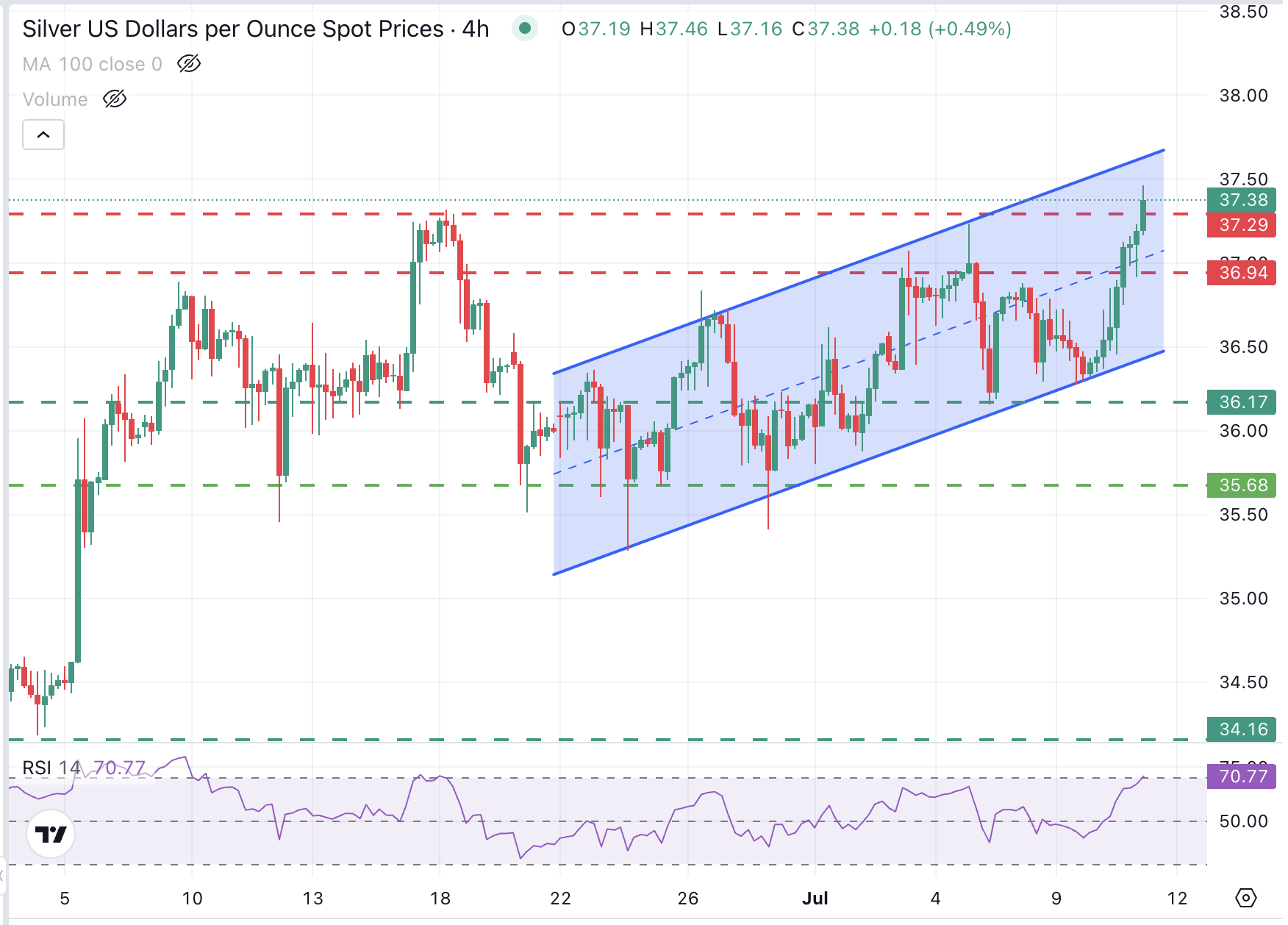- Precious metals rally on risk aversion as trade uncertainty grows.
- Trump’s threats of higher blanket tariffs have boosted demand for safe assets.
- XAG/USD has pierced the $37.30 long-term high with bulls focusing on $37.65.
Silver (XAG/USD) extends gains for the second consecutive day on Friday, supported by a mild risk-averse sentiment, after Trump announced a new batch of levies and hiked baseline tariffs to all other countries to 15% or 20% from the initial 10%.
The US president brushed concerns about inflation and rattled markets by applying tariffs of 35% on Canadian products and announcing a letter to the European Union, casting doubt on the progress of the trade talks and increasing uncertainty about the global trade outlook. Markets have reacted with risk aversion, dumping equities and boosting safe assets like precious metals.
Technical Analysis: Above $37.30, the next target is $37.65

Silver bounced up at the bottom of the ascending channel from June 24 lows on Thursday and is now testing the top of the last six weeks’ trading range, at $37.30, which is also a 12-year high.
The 4-Hour Relative Strength Index is close, but not yet at overbought levels, and the fundamental background remains supportive. With this in mind, a retest of the channel resistance, now at $37.65, looks like a plausible target before a consolidation or a downside correction takes place.
On the downside, immediate support is at the $36.95 intra-day low and July 8 highs, ahead of the channel bottom, now at $36.45, and the July 9 low at $36.15.
Tariffs FAQs
Tariffs are customs duties levied on certain merchandise imports or a category of products. Tariffs are designed to help local producers and manufacturers be more competitive in the market by providing a price advantage over similar goods that can be imported. Tariffs are widely used as tools of protectionism, along with trade barriers and import quotas.
Although tariffs and taxes both generate government revenue to fund public goods and services, they have several distinctions. Tariffs are prepaid at the port of entry, while taxes are paid at the time of purchase. Taxes are imposed on individual taxpayers and businesses, while tariffs are paid by importers.
There are two schools of thought among economists regarding the usage of tariffs. While some argue that tariffs are necessary to protect domestic industries and address trade imbalances, others see them as a harmful tool that could potentially drive prices higher over the long term and lead to a damaging trade war by encouraging tit-for-tat tariffs.
During the run-up to the presidential election in November 2024, Donald Trump made it clear that he intends to use tariffs to support the US economy and American producers. In 2024, Mexico, China and Canada accounted for 42% of total US imports. In this period, Mexico stood out as the top exporter with $466.6 billion, according to the US Census Bureau. Hence, Trump wants to focus on these three nations when imposing tariffs. He also plans to use the revenue generated through tariffs to lower personal income taxes.

